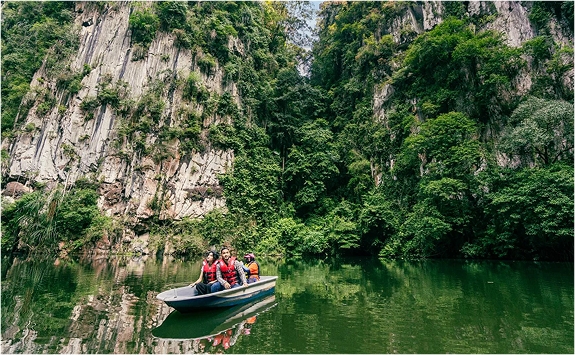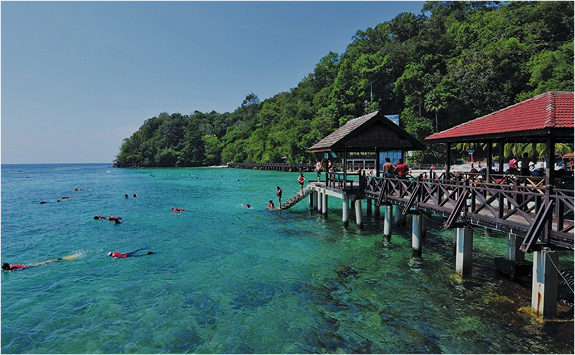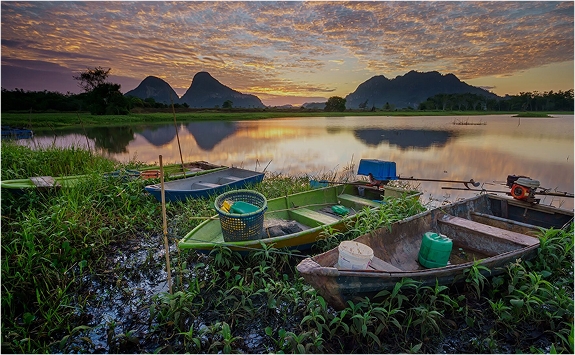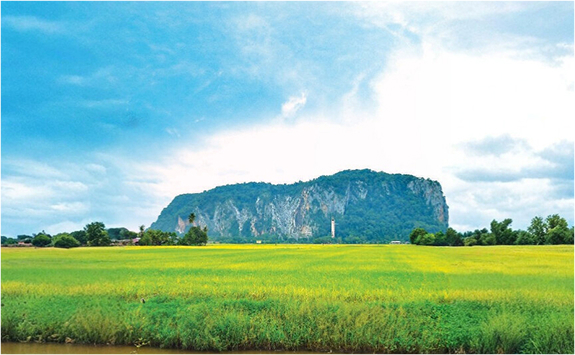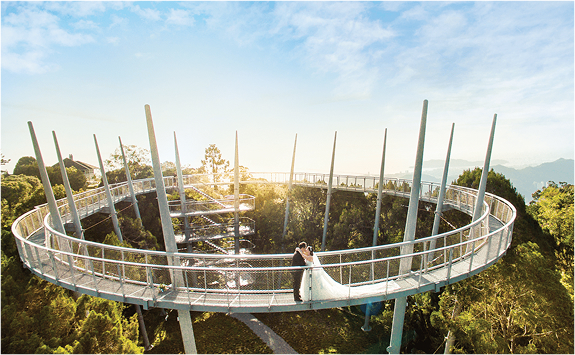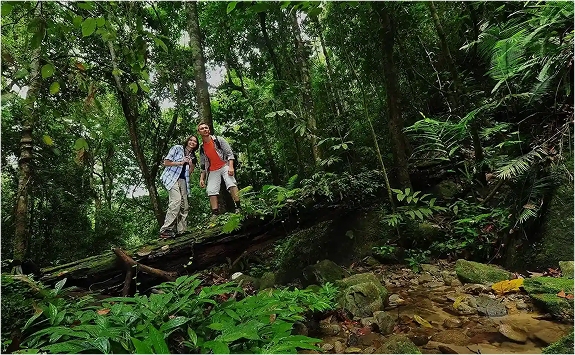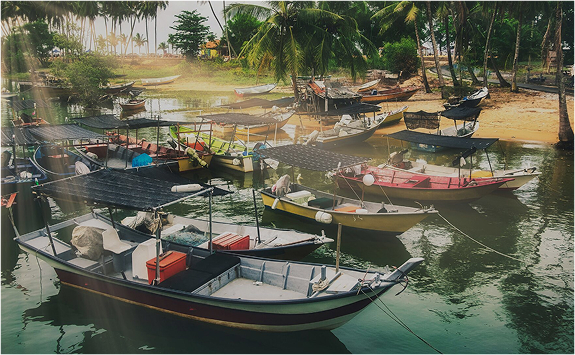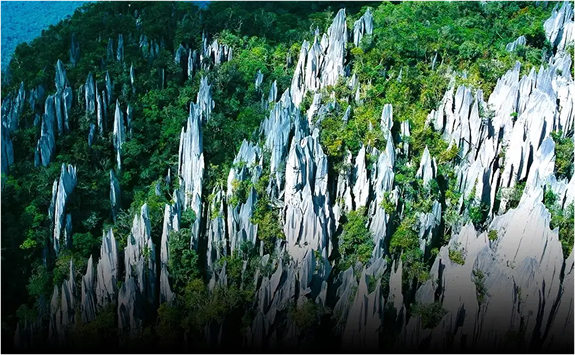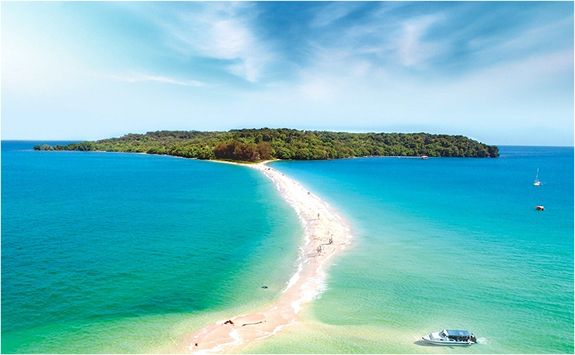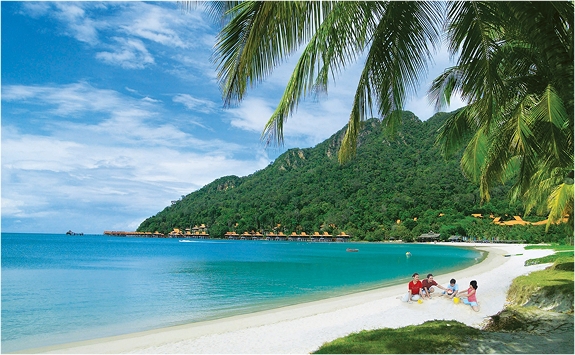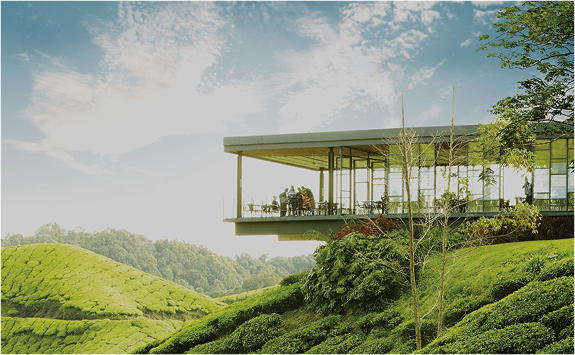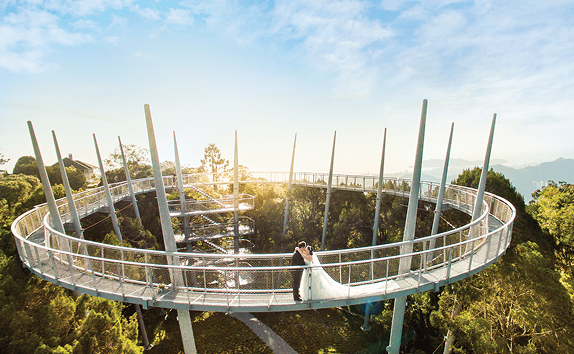SARAWAK
Sarawak
The culturally diverse state of Sarawak is the pride of the nation. This mystical state is full of ancient history and wondrous nature. This is the largest state in Malaysia, covering 124,000 square kilometres and has an 800 kilometres coastline, facing the South China Sea. It is on the north western coast of Borneo, the third largest island in the world.
Contact Info
- Sarawak Tourism Board
- www.sarawaktourism.com
- Gunung Mulu National Park
- Similajau National Park
-
Visitor’s Information Centre, Kuching Sarawak
Tourism Complex, (Old Courthouse) - vic-kuching@sarawaktourism.com
- Visitor’s Information Centre, Miri
- vic-kuching@sarawaktourism.com
-
National Park Booking Offices (Kuching)
National Parks Booking Office
Visitors Information Centre -
Jaya Nature Reserve, Jalan Setia Jaya,
Tabuan Jaya, 93000 Kuching, Sarawak.
- National Park Booking Offices (Miri)
- Online booking: ebooking.sarawak.gov.my
The natural assets and beauty of Sarawak is in its blend of tribal traditions and nature: everything from the scattered valley farms of the Kelabit Highlands to the bird’s-nest trading communities of the Niah Caves and the nomadic jungle Penan have their place. Birdwatchers will have an amazing time birding and enjoying sites so amazing such as Sarawak!
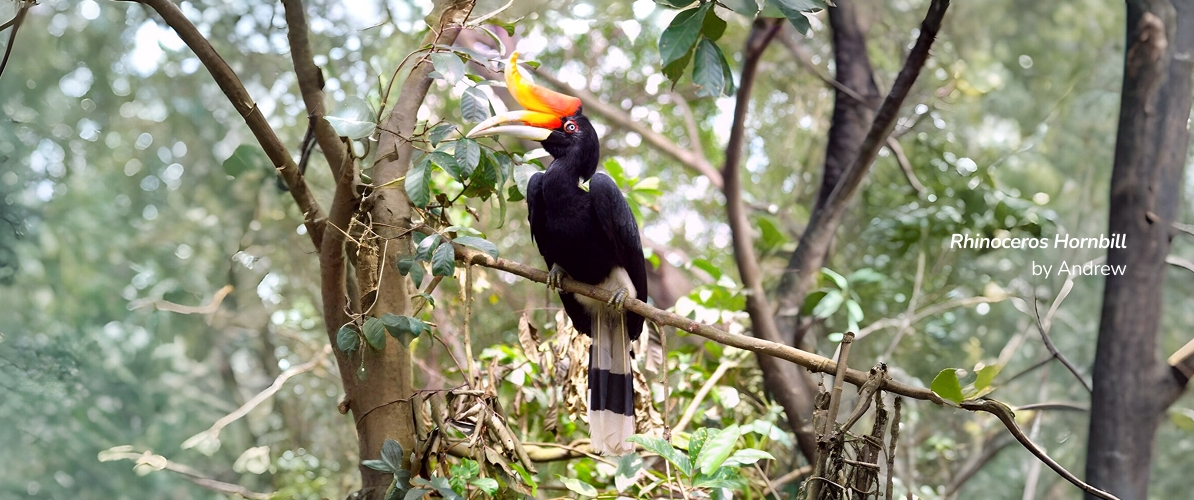
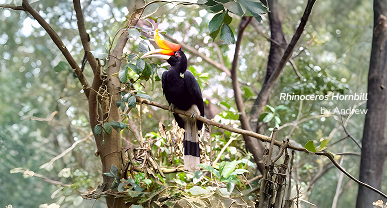
Bako National Park
No. of species: 237
Bako National Park is Sarawak’s oldest national park, covering an area of 2,727 ha was gazetted in 1957. It is at the tip of the Muara Tebas peninsula and is one of the smallest national parks in Sarawak, yet one of the most interesting, as it contains almost every type of vegetation found in Borneo.
This national park has a fascinating variety of habitats including the Kerangas Forest, beach vegetation, grassland, mangroves as well as mixed dipterocarp and peat swamp forest and was designated as an IBAs, (MY37). Bako National Park offers visitors an excellent introduction to the rainforest and coastline of Borneo. So far, 237 species of both resident and migrant birds have been recorded here.
Between the park headquarters or the mangroves of Telok Asam, it is as a good place to start birdwatching. Here you might catch sight of the common resident birds such as Pink-necked Green-pigeon, Ashy Tailorbird, Mangrove Blue-flycatcher, Common Flameback and Sunda Pygmy Woodpeckers, Stork-billed Kingfisher, Collared Kingfisher, Chestnut-breasted Malkoha, and Chestnut-bellied Malkoha. Head for the Lintang and Serait trails if you are searching for forest birds such as the Red-naped Trogon, Grey-capped Emerald Dove (Asian Emerald Dove), Asian Fairy Bluebird, Greater Racquet-tailed Drongo, Velvet-fronted Nuthatch, Rufous-tailed Tailorbird, White- chested Babbler, Ruby-cheeked Sunbird, White-bellied Woodpecker, Buff-necked Woodpecker, Red-crowned Barbet and Bornean Brown Barbet (Brown Barbet), Blue- eared Kingfisher, Oriental Dwarf-kingfisher (Rufous-backed Dwarf-Kingfisher), Scarlet Minivet, Spotted Fantail, Oriental Paradise- flycatcher (Blyth’s Paradise-Flycatcher) and Grey-chested Jungle-flycatchers.
Visiting this site is best done between March to October.
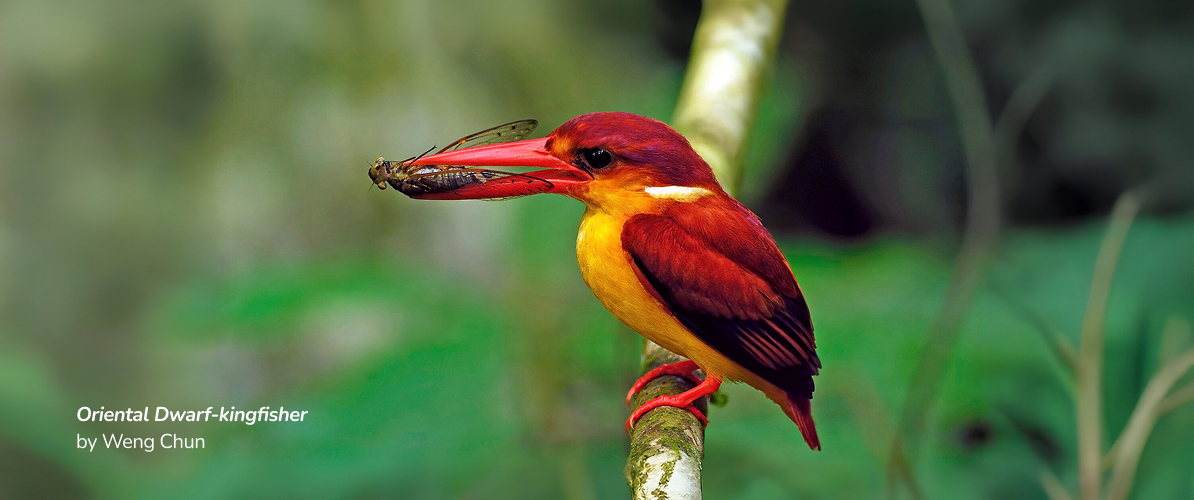
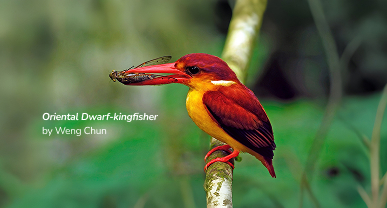
Gunung Mulu National Park
No. of species: 262
Gunung Mulu National Park is located near the oil drilling town of Miri. This park is a UNESCO World Heritage site that covers an area of 52,865 hectares encompassing an extensive system of rivers and streams, primary rainforests and its limestone karst formations featuring enormous caves, vast cave networks, rock pinnacles, cliffs and gorges. Mulu is also the second largest national parks in Sarawak.
It has 8 different types of forests in the greater area and Gunung Mulu National Park is a great birdwatching area. Blessed with diverse natural attributes, it is home to a staggering 262 bird species, including all eight hornbill species found in Sarawak. This park is a designated IBAS, (MY53) as the greater Mulu- Buda Protected Area.
This is a site for the much sought after for Bornean endemic birds such as the Bulwer’s Pheasant, Whitehead’s Trogon, Golden- naped Barbet, Hose’s Broadbill, Bornean Whistling-thrush, Black-throated Wren- babbler, Bornean Blue-flycatcher, Bornean Whistler and Black-sided Flowerpecker.
Other lowland specialities include Great Argus, Red-bearded Bee-eater, Yellow- crowned Barbet, Short-toed Coucal, Jerdon’s Baza, Bat Hawk, Rufous-bellied Eagle, Jambu Fruit-dove, Green Imperial-pigeon, Large Frogmouth, Moustached Hawk- cuckoo, Black Partridge, Crested Partridge, Crestless Fireback, Bornean Crested Fireback, Chequer-throated Yellownape, Buff-rumped Woodpecker, Diard’s and Red-naped Trogon, Raffles’s Malkoha, Red-billed Malkoha, Rufous-collared and Blue-eared Kingfisher.
Should you be up to it, try hiking up the Summit Trail to Gunung Mulu to see many montane bird species including the endemic Whitehead’s Trogon and Whitehead’s Broadbill.

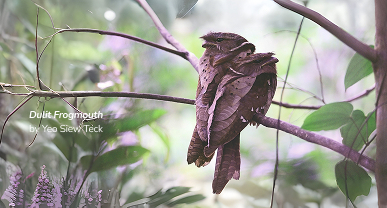
Similajau National Park
No. of species: 185
Gazetted as a park in 1976, The Similajau National Park covers an area of 8,996 hectares and with an approximate 71 square kilometres of flat and mildly undulating rainforest, with the eastern part of the park facing the South China Sea. This site is situated about 25 kilometres northeast of Bintulu town and is listed as an IBAs, (MY49).
Around 6 hornbill species are found amongst the 185 species of birds recorded here. There are about four Bornean endemic species – Bornean Wren-babbler, Yellow-rumped Flowerpecker, Dusky Munia and the superstar – the Bornean Bristlehead.
Other recorded species include the Bat Hawk, Wallace’s Hawk-eagle, Great Argus, Violet Cuckoo, Short-toed Coucal, Buffy Fish- owl, Brown Wood-owl, Large Frogmouth, Blue-throated Bee-eater, Great Slaty Woodpecker, Garnet Pitta, Hook-billed Bulbul, Diard’s Trogon, Scarlet-rumped Trogon as well as the Crested Jay and Malay Blue-flycatcher.
The short View Point Trail leads to the viewing point shelter, where you can look for White-bellied Sea-eagle, Brahminy Kite, Storm’s Stork, and a variety of other seabirds. Apart from amazing birds, there are five species of that frequent the waters off Similajau – the Irrawaddy dolphin, the Bottlenose dolphin, the Indo-pacific Humpback dolphin, the Finless Porpoise dolphin and the Pantropic Spotted dolphin – and all are more frequently encountered between March and September.
Penrissen Range / Gunung Penrissen
No. of species: > 200
The Penrissen Range is located in the world’s oldest and second largest tropical rainforest and is accessible only via Borneo Highlands Resort, about 60 kilometres southwest of Kuching. The range sits more than 1,000 metres asl between Kalimantan and Sarawak. This is one of the most frequently and well documented sites in Sarawak.
The highest point is the spectacular Gunung Penrissen, which is one of the more accessible mountains on the Sarawak/Kalimantan border, standing proud at 1,326 metres high. Located at the western-most mountain range on Borneo, Gunung Penrissen is isolated from the central highland spine of Borneo, and has a distinct ecology. This mountain forms part of the range of low mountains which form the border with Kalimantan and includes the died-out volcano of Gunung Niut (1,701 metres) in Kalimantan.
Designated as an IBAs, (MY40), it has a bird list of over 200 species with about nine endemics including the Blue-banded Pitta, Chestnut-crested Yuhina, Yellow-rumped Flowerpecker and Pygmy White-eye. An interesting hike along the Penrissen trail may get birders views of Great Argust, Long-billed Partridge, Wreathed Hornbill, White-crowned Hornbill, Pale Blue-flycatcher, Hume’s White-eye, Temminck’s Sunbird, Ashy Drongo, Rail-babbler Black-thighed Falconet and many more. Clearly one of the more accessible and popular trails and birdwatching sites in Borneo.
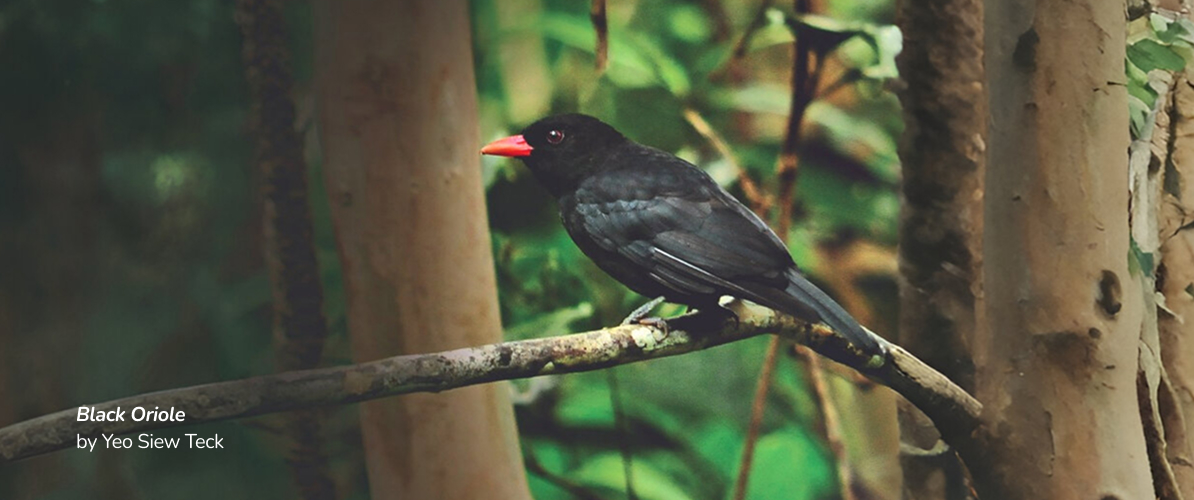
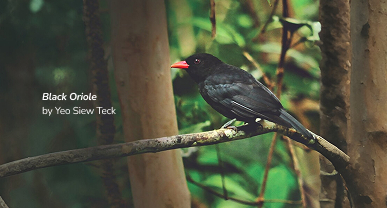
Kubah National Park
No. of species: 252
Kubah National Park is arguably the most accessible nature and birdwatching site. This 2,230 hectare park is set around a sandstone ridge with its three mountain peaks and popular for its waterfalls and wildlife. Established in 1989 and located about 22 kilometres from the Sarawak state capital of Kuching, this popular park is blessed with a variety of wildlife especially its 252 species of birds. The list includes endemics such as the Blue-banded Pitta, Bornean Blue-flycatcher, Yellow-rumped Flowerpecker, Black-faced Kingfisher (Banded Kingfisher) and Bornean Black Magpie.
There are also well established trails such as the Main Trail, Summit Trail, Waterfall Trail, Selang Trail that offers other unique experiences and targets such as the Great Argus, Red-bearded Bee-eater, Chestnut- naped Forktail, White-rumped Shama, Brown Fulvetta, Spotted Fantail, Mangrove Whistler, Crested Jay, Red-naped Trogon, White- crowned Hornbill, Red-throated Barbet, Rufous Piculet, Buff-necked Woodpecker, Banded Broadbill, Green Broadbill, Raffles’s Malkoha and Rufous-collared Kingfisher. Included in the itinerary, is the world famous Matang Wildlife Centre. Apart from its many draws, birdwatchers can have a chance at certain star birds such as the Bornean Bristlehead and Bornean Wren- babbler.
With its close proximity to the airport and Kuching City, this is yet another example of an amazing place to watch birds on your own or with an experienced local guide.
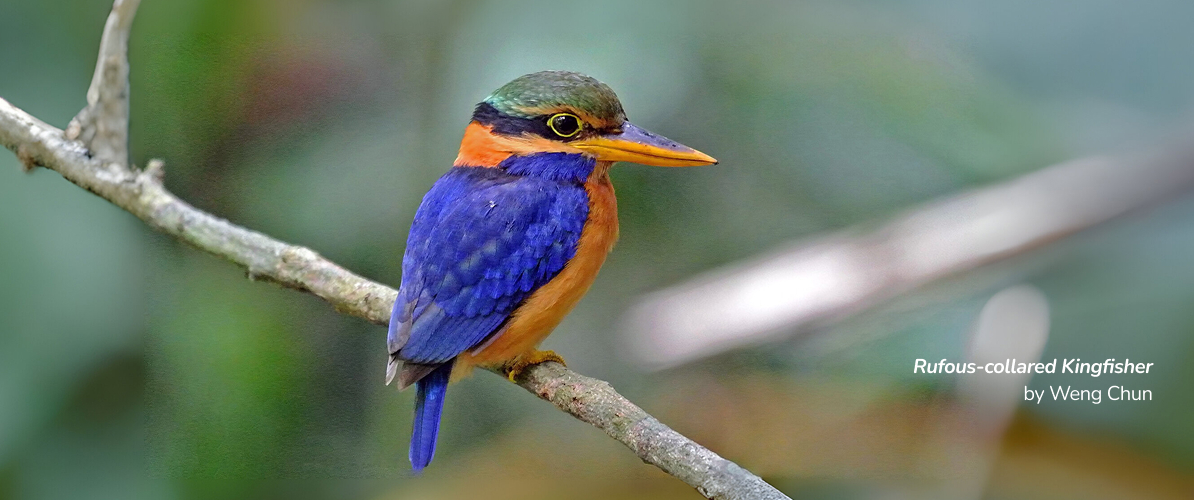
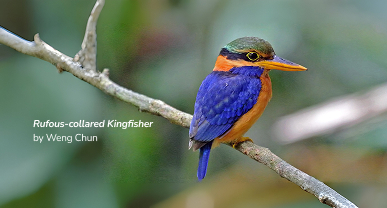
Paya Maga Highlands
No. of species: > 220
Paya Maga Highlands is where the summit of Gunung Matalan is located. Gunung Matalan stands at 1,860 metres and is situated in the Northern region of Sarawak. The terrain comprises of hilly terrain rising from 300 metres up to the summit of Gunung Matalan. The lower elevations are mostly made up of a secondary forest but the higher elevations are less disturbed, setting the stage for good birding experience with more than 220 species of birds to target, including 38 of Borneo’s endemic birds.
The prized target for this area is arguably the Black Oriole. Other sought-after endemics include the Bornean Frogmouth, Hose’s Broadbill, Blue-Banded Pitta, Bornean Banded Pitta, Whitehead’s Trogon, Whitehead’s Spiderhunter, Whitehead’s Broadbill, Bornean Bulbul, Bornean Leafbird, Bornean Barbet, Mountain Barbet, Black- faced Kingfisher (Banded Kingfisher), Pygmy White-eye, Bornean Stubtail, Black-throated Wren-babbler and Kinabalu Serpent-eagle (Mountain Serpent Eagle), Ferruginous Partridge, Reddish Scops-owl, Collared Owlet, Helmeted Hornbill, Rhinoceros Hornbill, Wreathed Hornbill, Rufous-collared Kingfisher, Green Broadbill, Cinereous Bulbul, Straw-headed Bulbul, Scaly-breasted Bulbul, Orange-breasted Trogon, Yellow-crowned Barbet, Hill Blue-flycatcher, Olive-backed Woodpecker, Hume’s White-eye, White-necked Babbler, Temminck’s Babbler and Crimson-breasted Flowerpecker.
There are a range of accommodation offered along the road from Lawas and at Kampung Long Tuyo and the road access makes it easy to reach and welcoming for travelers who enjoy the landscapes, food and culture.
Kelabit Highlands
This popular highland is located along a large highland plateau, at an altitude of over 1,000 metres surrounded by jungleclad mountains, including the highest mountain of Sarawak – Mount Murud, majestic at 2,423 metres high.
This range and its montane and submontane habitat cater to a large number of Borneo endemic species such as Bulwer’s Pheasant, Whitehead’s Trogon, Whitehead’s Spiderhunter, Whitehead’s Broadbill, Fruithunter, Hume’s Thrush, Bornean Frogmouth, Hose’s Broadbill, Blue-banded Pitta, Bornean Banded Pitta, Bornean Bulbul, Bornean Leafbird, Bornean Barbet, Mountain Barbet, Pygmy White-eye, Black-throated Wren-babbler and Kinabalu Serpent-eagle (Mountain Serpent-Eagle) Ferruginous Partridge, Helmeted Hornbill, Wreathed Hornbill, Malay Blue-banded Kingfisher, Green Broadbill, Cinereous Bulbul, Scaly-breasted Bulbul, Orange-breasted Trogon, White-necked Babbler, Temminck’s Babbler and many more. This site is known to local birdwatchers as the best site to record the rare and endemic Dulit Frogmouth.
Access to this site is by road from the town of Lawas or by flight from Miri. Apart from homestays and lodges operated by the community, the park also has bungalows, hostels, rest houses and even longhouses for rent. There is a nominal park entrance fee of RM10. Permits and information are available at the Visitor Centre.

